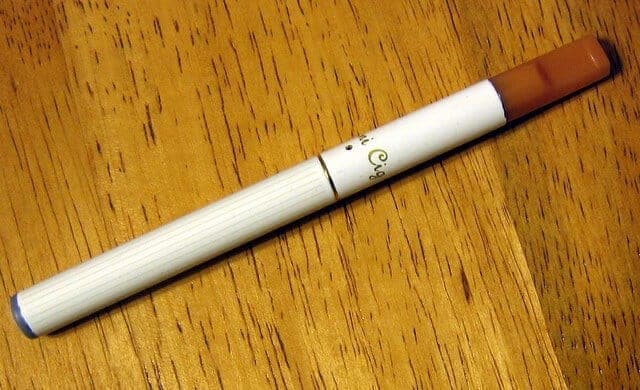The first ever trial to compare e-cigarettes with nicotine patches has found that both methods result in comparable success in quitting, with roughly similar proportions of smokers who used either method remaining abstinent from smoking for six months after a 13 week course of patches or e-cigarettes.
The study, presented today (8 September 2013) at the European Respiratory Society (ERS) Annual Congress in Barcelona, Spain and published in The Lancet, is only the second controlled trial to be published which evaluates e-cigarettes, and is the first ever trial to assess whether e-cigarettes are more or less effective than an established smoking cessation aid, nicotine patches, in helping smokers to quit. Led by Associate Professor Chris Bullen, Director of the National Institute for Health Innovation at The University of Auckland in New Zealand, a team of researchers recruited 657 smokers to the trial through adverts in local newspapers.
Study participants were all people who wanted to quit smoking, and were divided into three groups: just under 300 (292) received 13 weeks’ supply of commercially available e-cigarettes, each of which contained around 16mg nicotine. The same number (292) received 13 weeks’ supply of nicotine patches, and a smaller number of participants (73) received placebo e-cigarettes, which contained no nicotine.
Over 13 weeks of using the cessation aids, and 3 months further follow-up, participants underwent testing to establish whether they had managed to remain abstinent from cigarettes. At the end of the six-month study period, around one in twenty study participants (overall, 5.7%) had managed to remain completely abstinent from smoking.
While the proportion of participants who successfully quit was highest in the e-cigarettes group (7.3%, compared to 5.8% for those in the nicotine patches group, and 4.1% in the placebo e-cigarettes group), these differences were not statistically significant. The results suggest that e-cigarettes are comparable to nicotine patches in helping people to quit for at least six months. Additionally, the results found no statistically significant difference in any adverse changes to health reported by participants in the e-cigarettes and the nicotine patches group.
Among those who had not managed to quit after six months, cigarette consumption was markedly reduced in the nicotine e-cigarettes group, compared to the patches and placebo groups; well over half (57%) of the participants in the e-cigarettes group had reduced their daily consumption of cigarettes by at least half after six months, compared to just over two fifths (41%) of the patches group.
In both of the nicotine and placebo e-cigarettes groups, a third of participants were still using the devices after six months, compared to under one in ten (8%) of those in the patches group. When asked whether they would recommend their allocated product to a friend one month after finishing the course, around 9 out of 10 participants in both the e-cigarettes and the placebo groups said they would, compared to just over half (56%) in the patches group; these proportions were little changed after six months.
Professor Bullen said: “Our study establishes a critical benchmark for e-cigarette performance compared to nicotine patches and placebo e-cigarettes, but there is still so much that is unknown about the effectiveness and long-term effects of e-cigarettes. Given the increasing popularity of these devices in many countries, and the accompanying regulatory uncertainty and inconsistency, larger, longer-term trials are urgently needed to establish whether these devices might be able to fulfil their potential as effective and popular smoking cessation aids.”
European Respiratory Society President, Professor Francesco Blasi, said: “The introduction of e-cigarettes on the market has caused some debate amongst healthcare professionals. Our position is clear: we need more research on the positive or negative effects of these products.
“This study has taken us one step closer to understanding the effectiveness of these devices as a quitting aid, but we still need long-term independent clinical trials and behavioural studies. It is also essential that research focuses on the safety of these devices, as this is still an area that is lacking data and the results of this study suggest many people are enthusiastic about the use of the devices. Until this strong scientific evidence exists, policymakers who are deciding how to regulate the devices should proceed with caution.”


